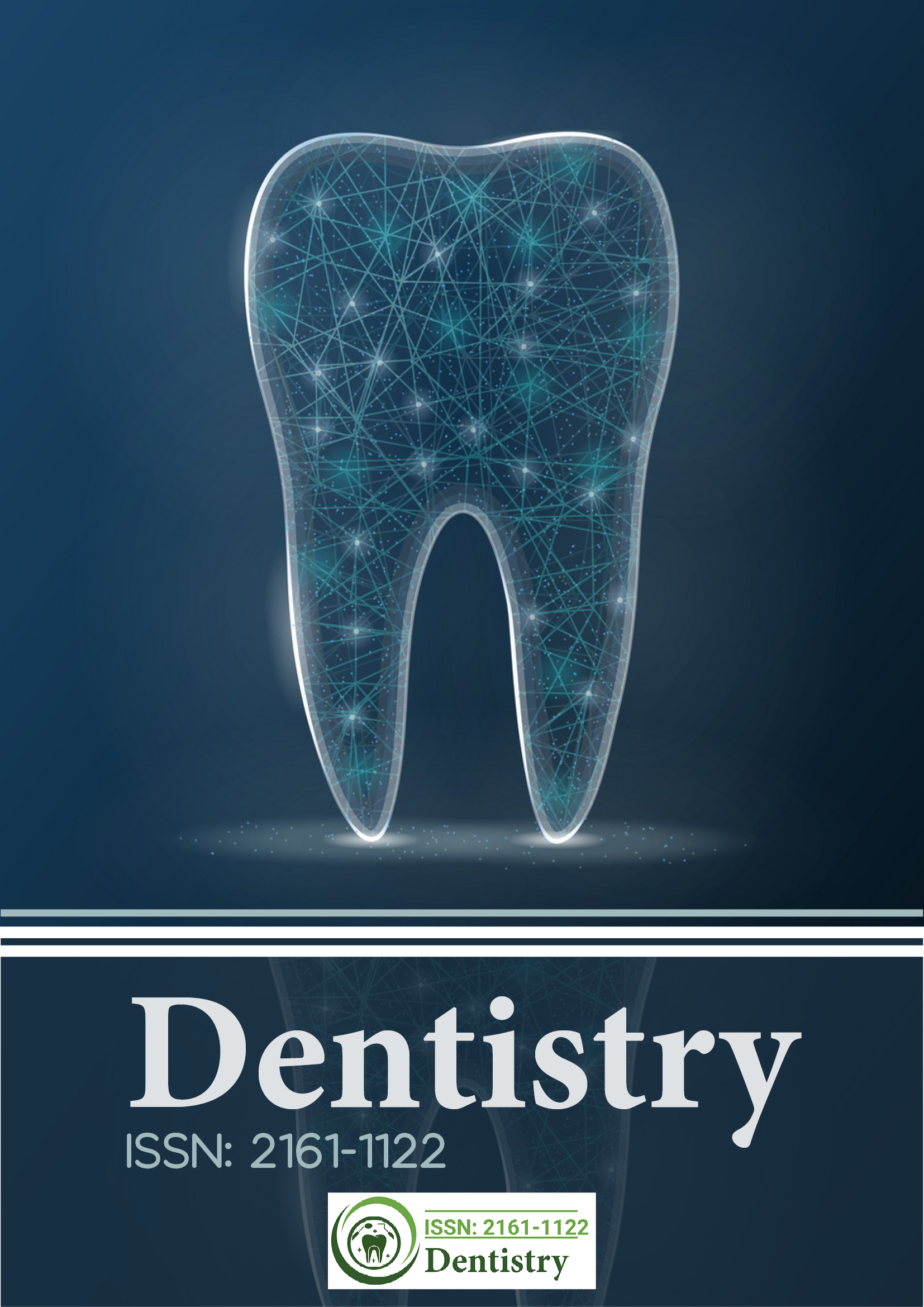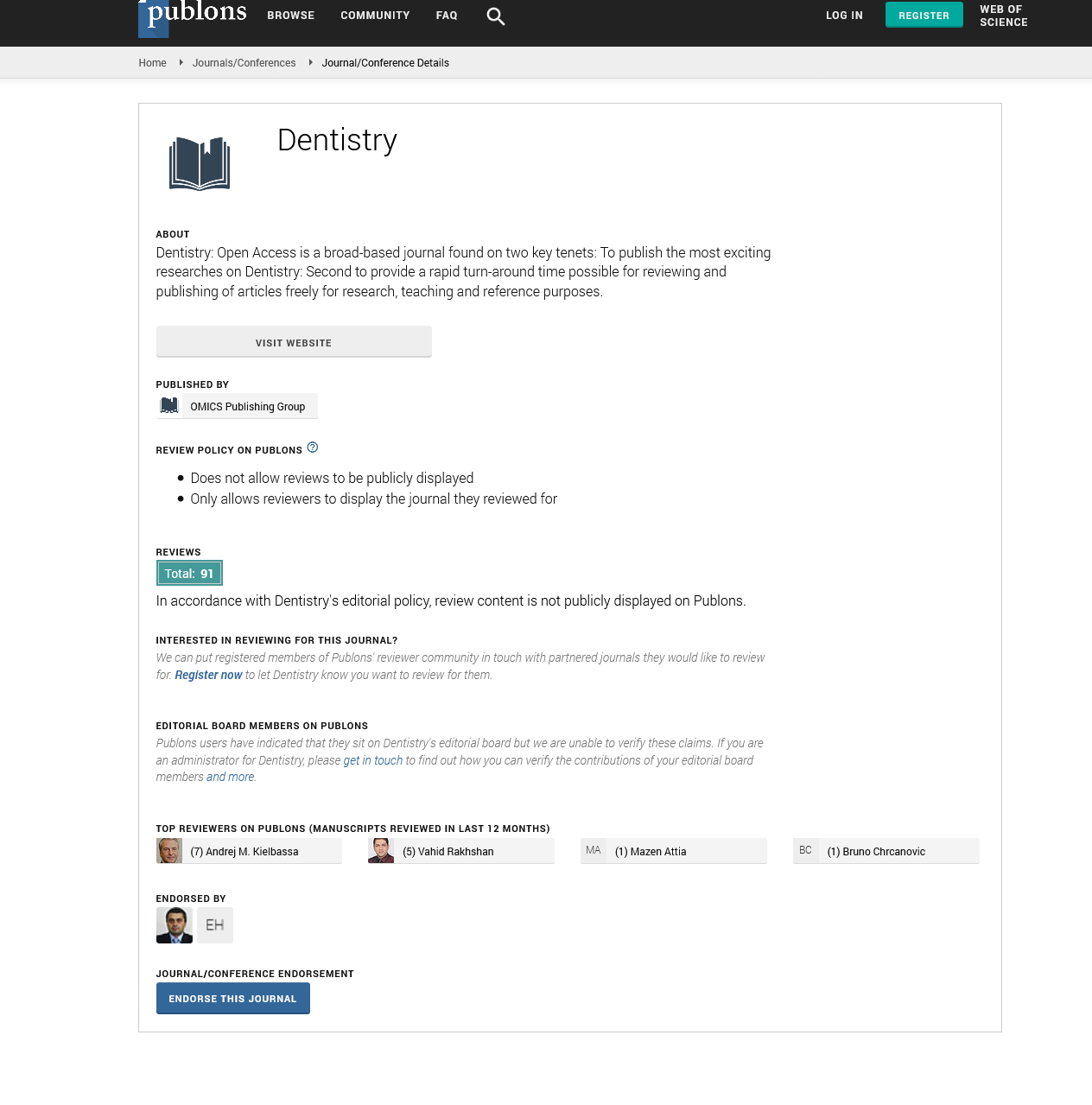Citations : 2345
Dentistry received 2345 citations as per Google Scholar report
Indexed In
- Genamics JournalSeek
- JournalTOCs
- CiteFactor
- Ulrich's Periodicals Directory
- RefSeek
- Hamdard University
- EBSCO A-Z
- Directory of Abstract Indexing for Journals
- OCLC- WorldCat
- Publons
- Geneva Foundation for Medical Education and Research
- Euro Pub
- Google Scholar
Useful Links
Share This Page
Journal Flyer

Open Access Journals
- Agri and Aquaculture
- Biochemistry
- Bioinformatics & Systems Biology
- Business & Management
- Chemistry
- Clinical Sciences
- Engineering
- Food & Nutrition
- General Science
- Genetics & Molecular Biology
- Immunology & Microbiology
- Medical Sciences
- Neuroscience & Psychology
- Nursing & Health Care
- Pharmaceutical Sciences
Hydrogels in regenerative dental medicine
23rd International Conference on Dentistry and Dental Materials
July 19-20, 2018 | Rome, Italy
Pierre Weiss
University of Nantes, France
Keynote: Dentistry
Abstract:
This keynote will give an overview of hydrogels use for regenerative dental medicine. Hydrogels are three dimensional networks
that have the ability to retain large amounts of water. More than 90% of the body is composed of macromolecules physically
or chemically crosslinked in high water content and soluble compounds. Hydrogels have structural similarities with extracellular
matrices (ECMs) and versatility that make them the ideal candidates in tissue engineering, drug delivery systems, and specific
medical devices. 20 years ago, we designed injectable bioactive suspensions in water of calcium phosphate ceramics for bone
and periapical regenerations. Because of leakage of these suspensions, we focused on injectable hydrogels before to set in situ by
physical or chemical crosslinking to form 3D scaffolds. Finally, we set up a platform to develop a series of innovative hydrogels for
bone, periodontal and endodontic tissue regeneration. We based our strategy on polysaccharides macromolecules because they
are renewable materials, that originate from biological sources and generally are biocompatible, non-toxic and biodegradable. We
developed a family of silanized and methacrylated macromolecules able to react forming biocompatible hydrogels. The silanized
polymer are self-setting hydrogel able to covalently crosslink under pH variation, without addition of toxic crosslinking agent. The
methacrylated polymers allow the in-situ photo crosslinking under standard dentistry lamp using cytocompatible photoinitiators.
All these macromolecules could be combine in multicomponent hydrogels, representing a strategy for improving mechanical
properties of biomaterials or to tailor particular properties to meet specific needs. For mineral scaffolding, we realized composites
of calcium phosphates particles or cements with hydrogel, increasing the ductility and creating macroporous scaffold to propose
foam bone cements. For endodontic applications we started to explore crushed dentine in high pH hydrogel for local autologous
growth factors release and to investigate specific galenic formulation for dual molecules delivering. Future perspectives of our
strategy are moving towards 3D printing and bio printing techniques. We will use our hydrogel platform to prepare tunable (bio)
inks well adapted for specific applications in personalized dental medicine.
Recent Publications:
1. Figueiredo L et al. (2018) Assessing glucose and oxygen diffusion in hydrogels for the rational design of 3D stem
cell scaffolds in regenerative medicine. Journal of Tissue Engineering and Regenerative Medicine. 12(5):1238-1246.
Doi:10.1002/term.2656.
2. Hached F et al. (2017) Polysaccharide hydrogels support the long-term viability of encapsulated human
mesenchymal stem cells and their ability to secrete immunomodulatory factors. Stem Cells International. 2017:
Doi:10.1155/2017/9303598.1-11.
3. Flégeau et al. (2017) Toward the development of biomimetic injectable and macroporous biohydrogels for regenerative
medicine. Advances in Colloid and Interface Science. 247:589-609. Doi: 10.1016/j.cis.2017.07.012.
4. Zhang J et al. (2016) A simple and effective approach to prepare injectable macroporous calcium phosphate cement
for bone repair: syringe-foaming using a viscous hydrophilic polymeric solution. Acta Biomaterialia. 31:326-338. Doi:
10.1016/j.actbio.2015.11.055.
5. Aubeux D et al. (2016) Assessment and quantification of noncollagenic matrix proteins released from human dentin
powder incorporated into a silated hydroxypropylmethylcellulose biomedical hydrogel. Journal of Endodontics.
42(9):1371-1376. Doi: 10.1016/j.joen.2016.05.019.
Biography :
Pierre Weiss, PhD, DDS, received his Dental Doctorate in 1989. He pursued his Master of Science in Biomaterial (Nantes) in 1993, his PhD in Biomaterial (Nantes) in 1997. He is a Professor in Biomaterials of the University of Nantes in Dental Surgery Department and Hospital. He is the Head of REGOS team in UMRS 1229 RMeS Unit. His scientific activities are skeletal tissue engineering, physiochemistry in hydrophilic polymer to make hydrogels for synthetic extra cellular matrix, bone substitutes. His research interests include the chemistry and characterization of macromolecular solution and hydrogels to prepare synthetic extracellular matrices for tissue engineering of bone. He is also the President of the society for biohydrogels and the Vice Dean of the Nantes Dental school. He has more than 150 ISI indexed publications, 7 patents and Hirsh index: 41, 4000 citations.
E-mail: pierre.weiss@univ-nantes.fr

